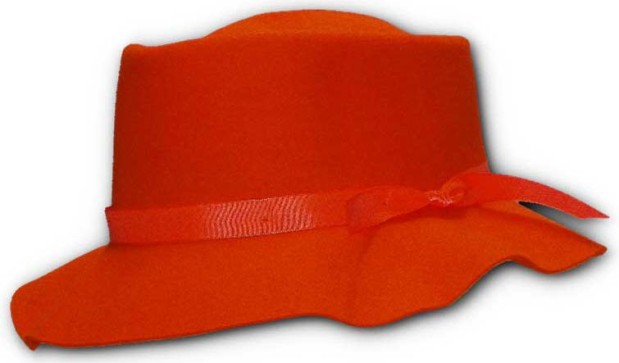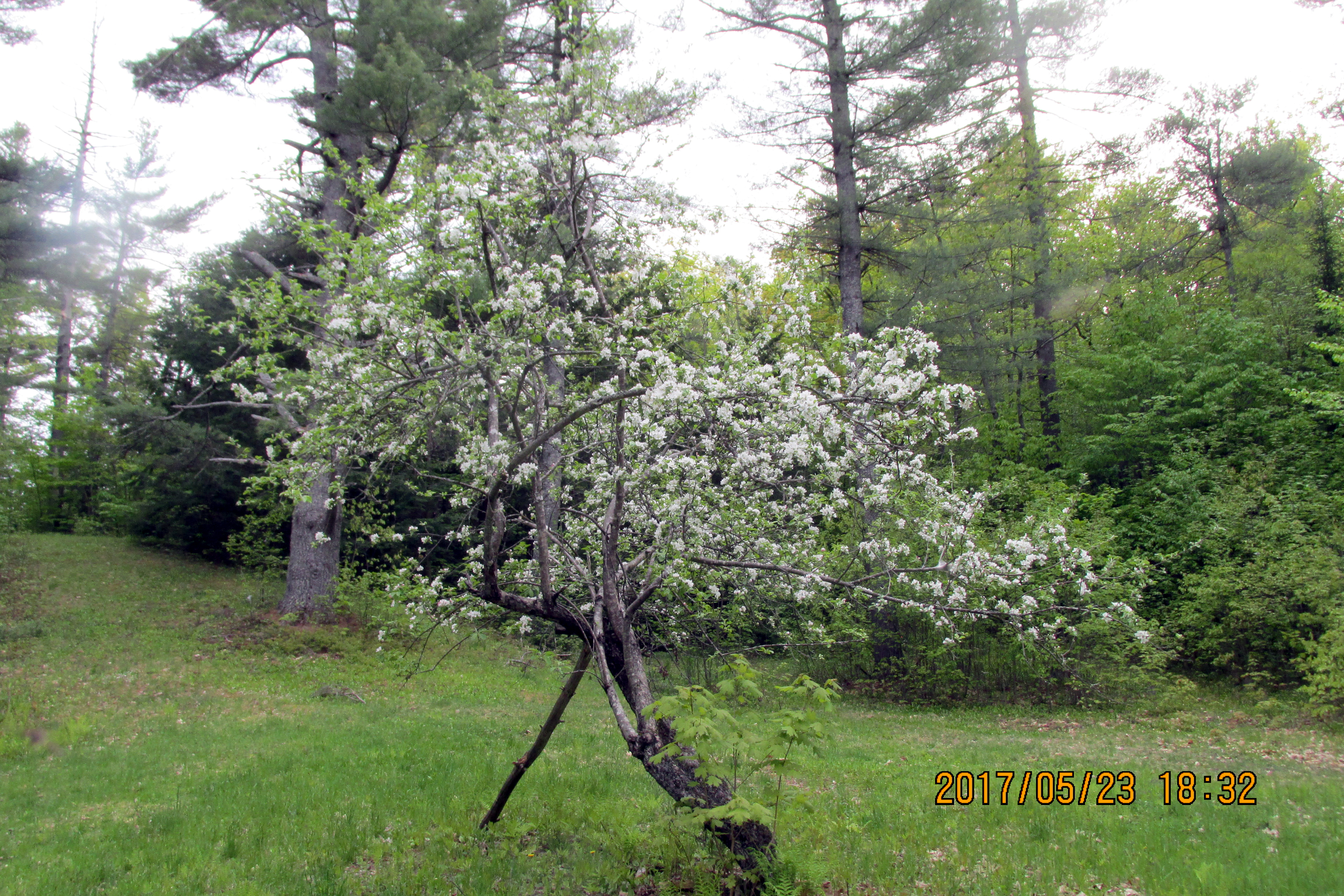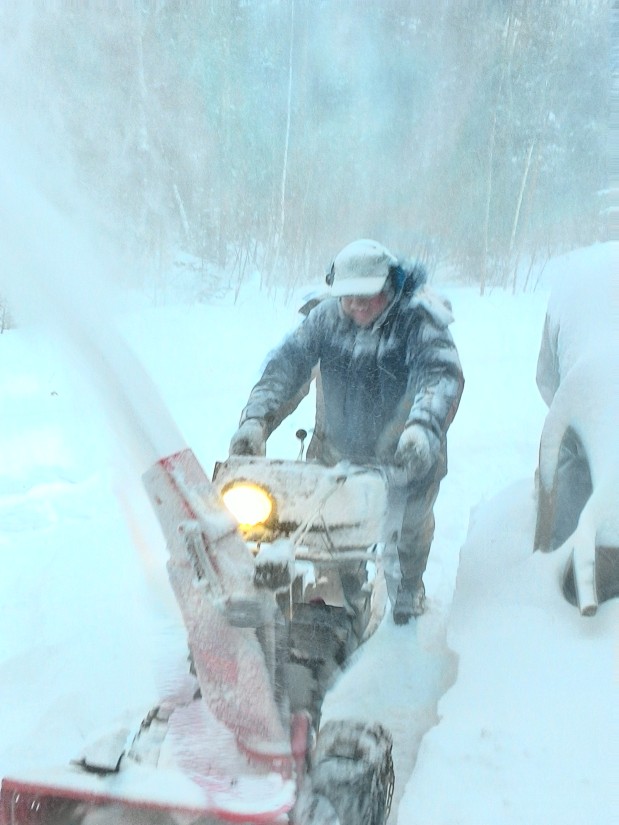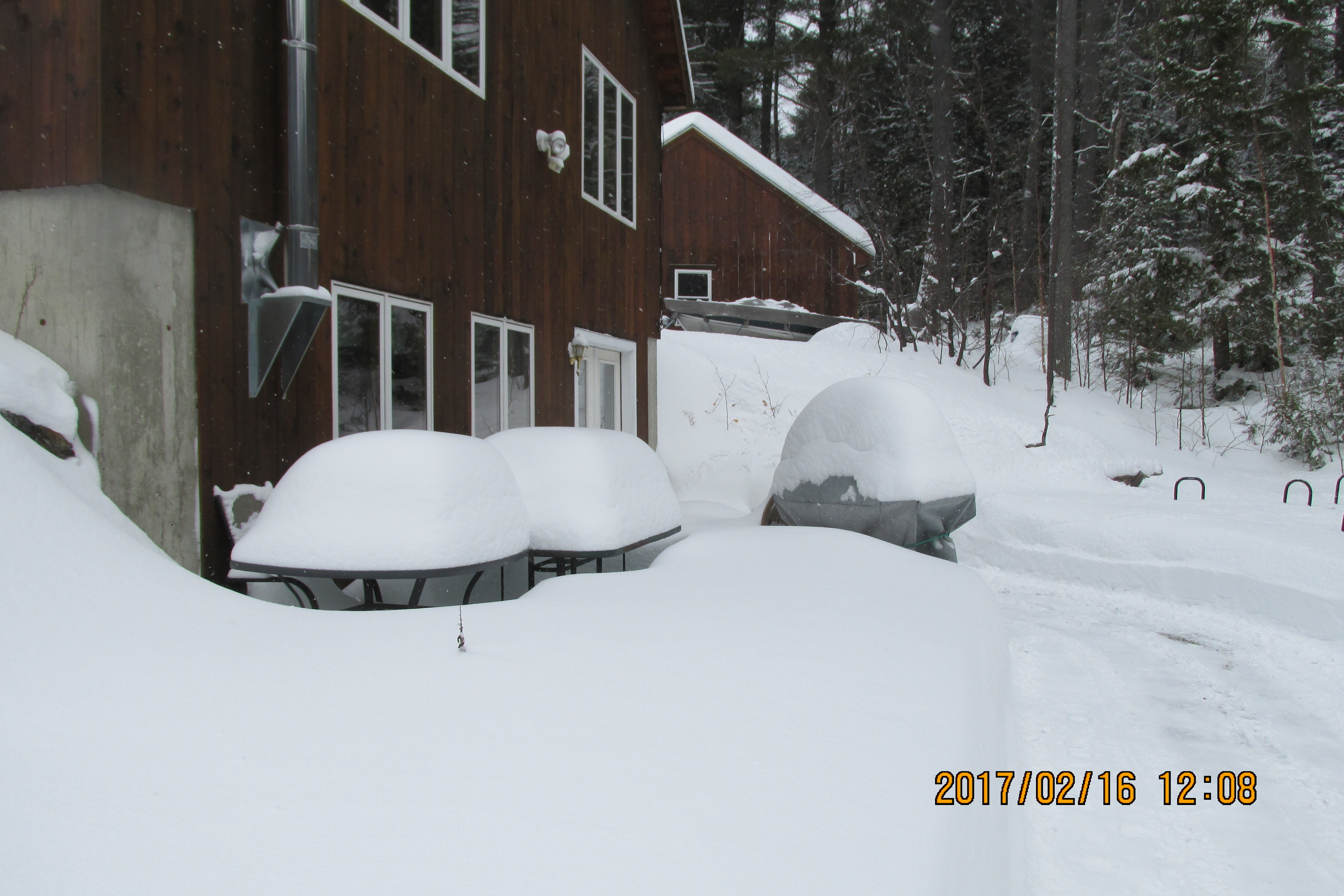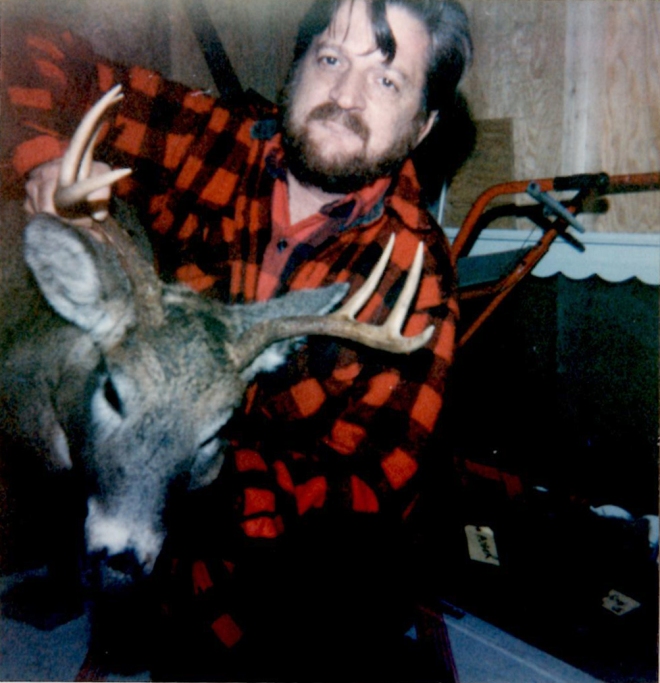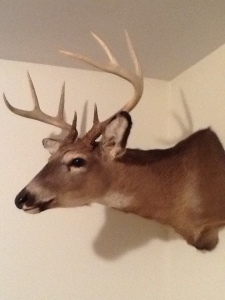
8-Pointer
Although I got that buck in 1967, the story started a year earlier.
In October 1966 in Athens, Vermont, I was starting my second year of bow hunting in that state and my initiation to a thrilling and humbling experience that would last a lifetime.
My hunting equipment consisted of a Wing 42# 62” wood and fiberglass laminate bow, a dozen arrows made of Port Orford cedar with turkey quills for fletchings and a Kwikee quiver, which clamped to the limbs of the bow and left the Bear Razorheads exposed.
A simple military camo, today it would be close to Woodland camo, cotton poncho.
That was it. No tree stands; they were a decade away, and fiberglass arrows were a couple of years away, and aluminum a few years after that.
I had been hunting a few days, and had managed a shot at a doe when I awoke from a nap at the base of a hemlock tree the previous day.
I was working my way down a tote road with all the stealth I could muster when a snowshoe hare hopped across the trail in front of me. I remember thinking what a good cacciatore he would make. So I drew and fired and watched the arrow sail just over his back.

Snowshoe Hare
As I searched for the arrow, I came across another arrow. It was white with a Pearson Magnum broadhead. That head weighed much more than my Bears, but I decided to keep it on the rest in case I saw the hare again. No sense in using one of my own arrows on such an animal and chance losing or breaking it.
Back down the tote road another few yards and suddenly this beautiful six pointer jumps the road in front of me, from left to right. It was at that time the biggest deer I had ever seen in the woods.
I knew instantly where he was headed. I ran down the tote road past where he had crossed. I knew the road would cut hard right shortly after that. I made the corner and took another hard right into the field where I knew he would cross.
He did. I was 2 seconds away from getting into my comfort zone of 30 yards for a shot. He stepped into the field, head up and alert, at about 40 yards. I could make that shot. I practiced at that range often enough to feel that way.
He turned his head to the left, and I drew. My heart sank! There was the stupid Pearson broadhead!
I knew I was in trouble. I knew it weighed much more than my broadheads, so I adjusted my shot to hopefully compensate and let fly. I watched for what seemed forever as the arrow passed behind the left front leg and under the chest. What a helpless feeling as he turned back towards the tote road.
I cursed the fate of finding that stupid arrow. I looked forever for it and blood, but in the tall grass it was gone….I thought.
Two weeks later I took a neighbor, Everett Durand, there for opening day of gun season. I put him on a stump overlooking the tote road and threatened him with life and limb if he moved. Ten minutes later, I was sitting under a white pine overlooking the field when there he was, the buck, standing a few feet from where I had missed him two weeks earlier. The first shot of opening day was yet to be heard anywhere.
I brought my 7.7 Japanese rifle with the peep sight to my shoulder. Again I was snake bit. As plainly as I could see the deer with my naked eye, there wasn’t enough daylight yet to see him through the sight.
I waited patiently for the sky to brighten, but before it did he started back into the woods. I decided to take a
Kentucky windage shot, thinking that the worst that would happen is if I missed, he would run right into Everett.
I did, and he did. I missed, and I tracked him to the stump where Everett was supposed to be. He jumped right over it! Needless to say, Everett never was invited to hunt with me again.
The next March my best friend, Paul was home on leave from Vietnam. I took him to the spot to reenact everything that transpired that fall. I stood where I had taken the shot with the bow and guided him to the spot where the buck had stood. When I positioned him I said, “The arrow should be under your feet.” He looked down, parted the now matted grass, and sure enough, there it was!
The next year, I had to work on opening day of archery season, so my season started on that Sunday. I went to one of the many apple trees that were tucked along this small, wet area along a brook. I saw what I knew were that buck’s track in the mud.
I stopped almost immediately and went back to my car to plan my strategy for the evening. I started by leaving my Marlboros in the car, along with my camo poncho—too noisy. My clothing consisted of a Woolrich Buffalo red and black check shirt, a cotton camo Jones style hat, and a pair of jeans. I went back up the hill at about 2:00 PM and climbed a small apple tree. I was only off the ground about 5’. I had one leg on one limb and the other on another limb—almost wish-boned. It was uncomfortable, but it was my only option.
A couple of hours later, I got glimpses of does meandering through the swamp. A couple of hours after that, a snowshoe hare came out under the tree and starting feeding on the fallen apples.
I amused myself watching him to pass the time.
Suddenly I had more company as a Ruffed Grouse landed in the tree with me on my left side. I dared not move my head as she picked leaves off the tree.
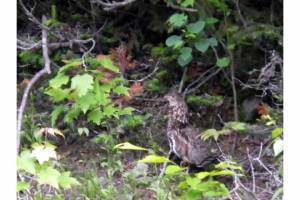
Ruffed Grouse
Just as suddenly, I heard something across the brook. I looked up only to see bright white antlers headed right for me.
My heart started beating so fast I could hear it and the leaves in the tree, as my left leg started to shake. I was sure that the grouse would feel it and fly off and spook the deer.
As the buck got closer, I decided I had to do something about my leg. When he put his head down to take an apple, I grabbed the right limb of the tree and lifted my leg to take the pressure off; all the while keeping an eye on the hare and the grouse.
It worked. The shaking stopped, and I very, very slowly picked up my bow.
The deer was 20’ away as I put an arrow on the string. I could count his whiskers, hear him breath, and even hear him swallow. As his body turned towards me, he turned to his right and looked away.
I drew, keeping each of my three eyes on the hare, the grouse, and him.
I released and immediately noticed that he took a step forward at that instant. It took no time for the arrow to fly the 15’ to his chest. He whirled and was gone in four bounds in about 1 second.
I never did see or hear what happened to the hare or the grouse when I shot. I was too focused on the buck.
The blood trail was awful to say the least. The arrow didn’t pass through. Most of the drops were no bigger than a freckle.
We (me, Leslie Boardman, Jeff, and Weasel) tracked him until midnight, and all of our flashlights died.
He was headed straight downhill to a brook. I stripped off pieces of clothing to mark blood spots. When we got back to the tent I was shirtless.
Next morning at daybreak, we were back on the trail. We had good blood on a rocky spot on the edge of the brook. I sent the other guys across to look for blood on that side. When they got there they yelled, “There he is!”
“Where?”
“Right in front of you!”
The glare on the water was such from my side that I couldn’t see him. There he was, submerged with his antlers tangled in some overhanging brush.
When I dressed him out, I found the broadhead in his stomach and actually cut myself on it. The arrowhead deflected off a rib, through the liver, and never punctured the other side rib cage.
A decision we had to make was where to drag him out. The easiest way would be across the only posted land in the area. I decided to take the chance and drag him across the man’s field.
When we reached the barn, I went inside and spoke to the farmer and apologized for trespassing.
He said, “You shot that buck with that thing?” pointing at my bow as he looked at the deer.
“Yes sir,” I replied. “You can hunt on my land anytime you want, son.”
The deer was 155# dressed, 8 points, and probably 3-1/2 years old. It was the only bow-killed deer in Athens that year and the biggest bow-killed buck in that district that year.
The buck’s stomach was full of apples, and the meat was very tender and tasty. The best eating buck of that size I ever had.
It was the greatest hunting experience of my life, and that is saying a bunch!
WLAGS




